Soviet utopia projects shine at London Design Biennale
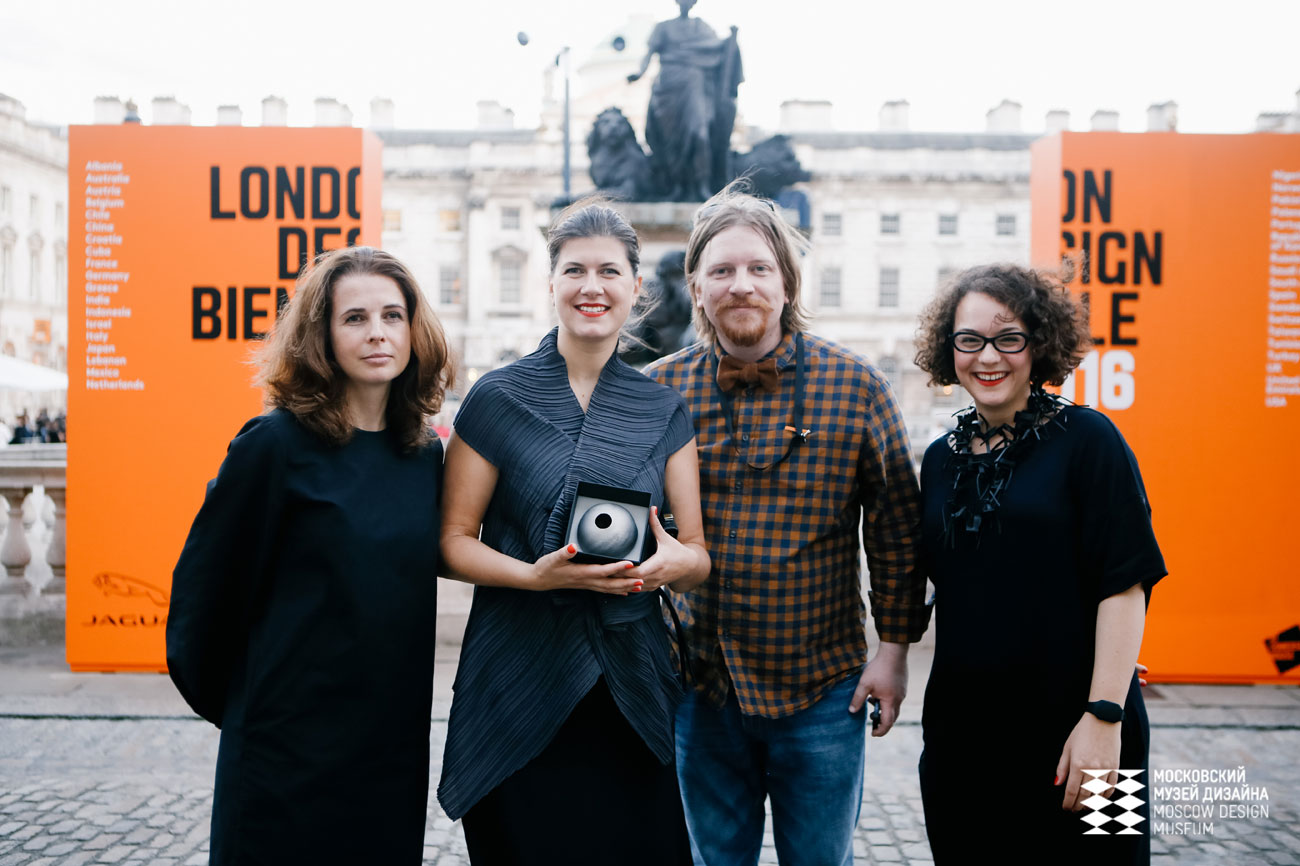
Team Russia (L-R): PR and development director Olga Druzhinina, Museum's director Alexandra Sankova, art director Stepan Lukyanov, international relations specialist Natalia Goldstein.
Sasha Nikonovich / Moscow Design Museum Team Russia (L-R): PR and development director Olga Druzhinina, Museum's director Alexandra Sankova, art director Stepan Lukyanov, international relations manager Natalia Goldsteine. Source: Sasha Nikonovich / Moscow Design Museum
Team Russia (L-R): PR and development director Olga Druzhinina, Museum's director Alexandra Sankova, art director Stepan Lukyanov, international relations manager Natalia Goldsteine. Source: Sasha Nikonovich / Moscow Design Museum
The very first London Design Biennale is currently welcoming visitors at London’s Somerset House, which has been almost completely taken over for the event, which runs until Sept. 27. With 37 countries from six continents participating in the event, a spread of countries from all over the globe is represented.
Russia was represented by the Moscow Design Museum with the exhibition “Discovering Utopia: Lost archives of Soviet Design” and was awarded a special medal for the best response to the biennale’s main theme – utopia in design.
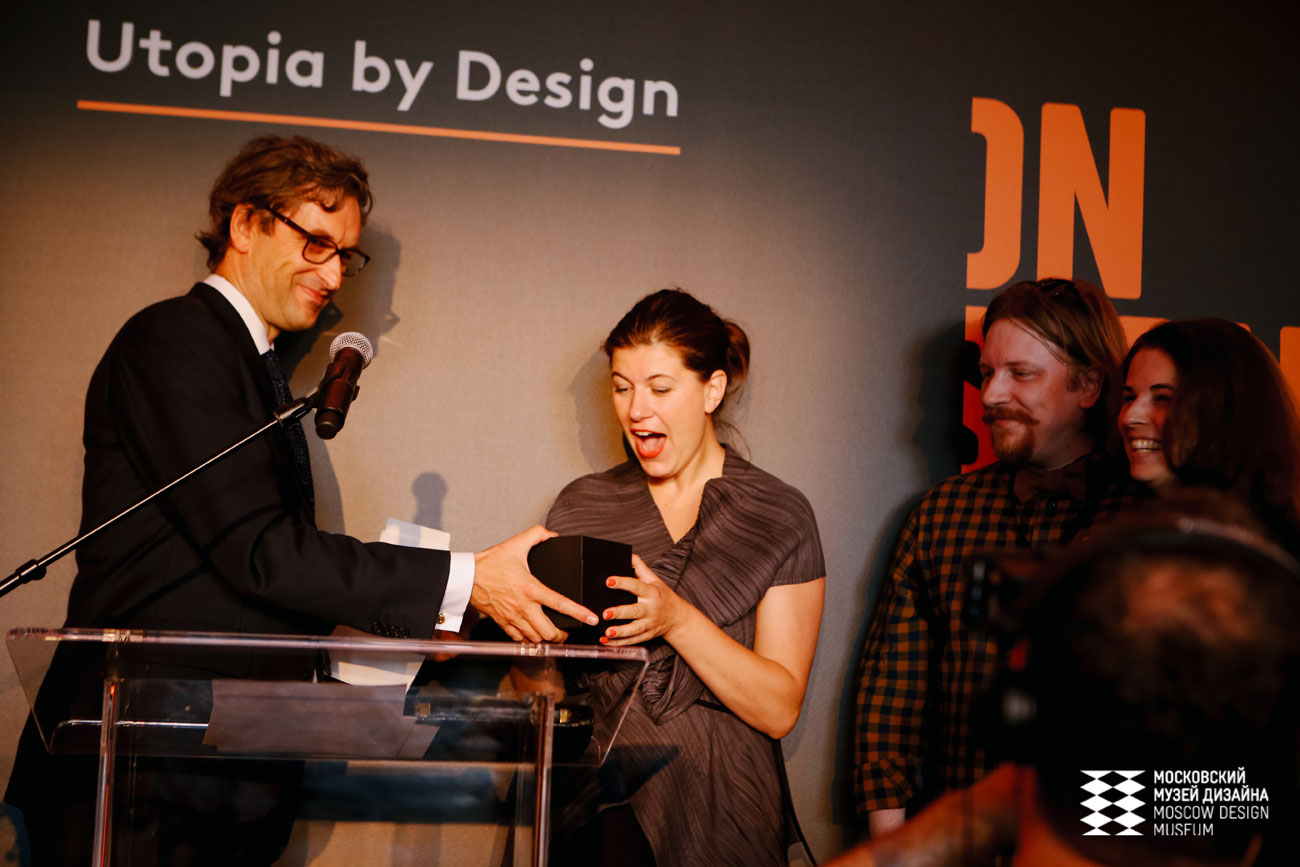 Alexandra Sankova, Moscow Design Museum's director receives the medal. Source: Sasha Nikonovich / Moscow Design Museum
Alexandra Sankova, Moscow Design Museum's director receives the medal. Source: Sasha Nikonovich / Moscow Design Museum
“We chose the theme ‘Utopia’ by design, because it’s 500 years since Thomas More published Utopia, his work on political philosophy that has been so influential for architects and designers for a long time,” the biennale’s director Dr. Christopher Turner told RBTH.
Among the countries participating, Turner highlighted Chile, Lebanon and Russia. “I really like the historical displays where people are encouraged to look backwards as well as forwards, back at their own history, at failed utopian schemes in their particular countries” he said.
Lost archives
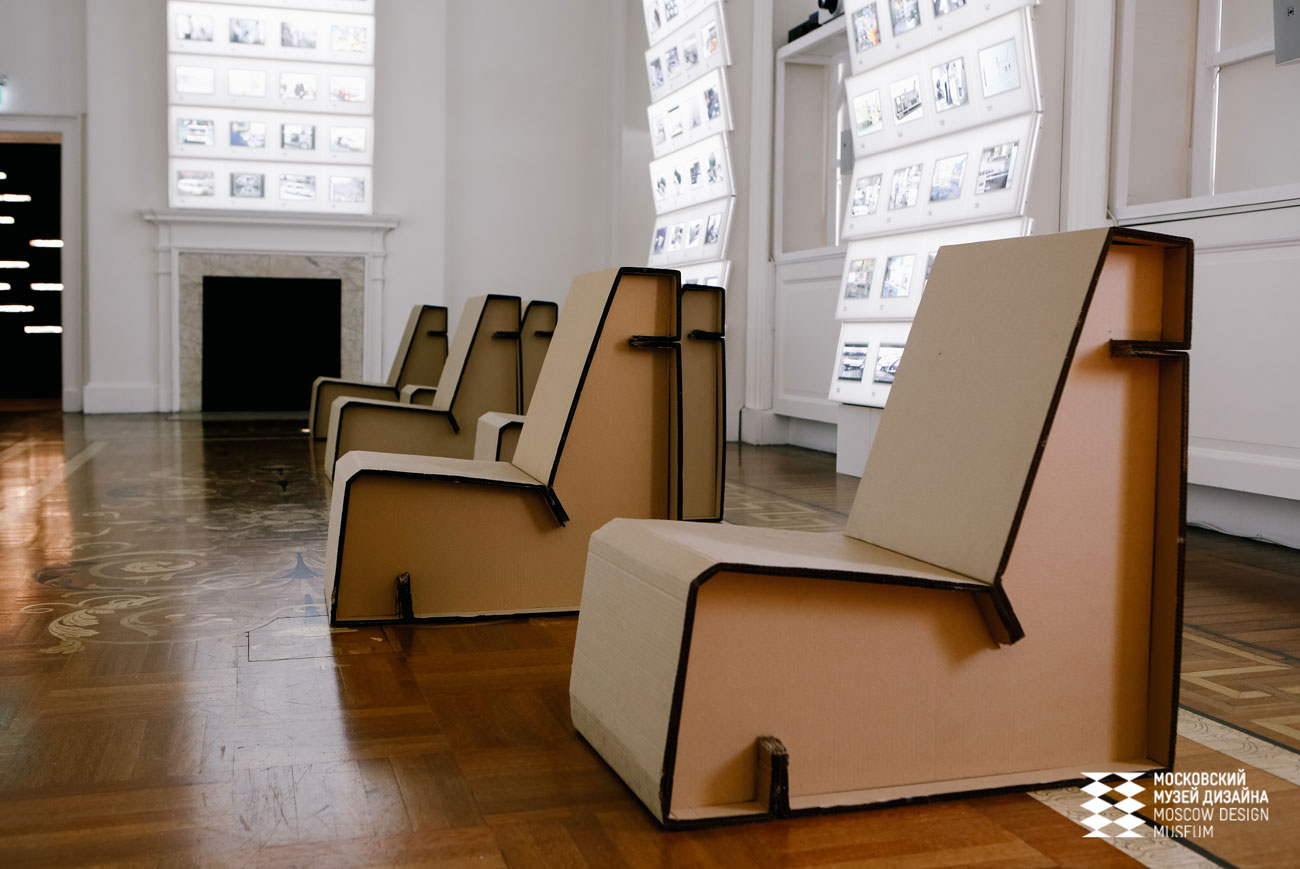 Innovative cardboard chairs. Source: Sasha Nikonovich / Moscow Design Museum
Innovative cardboard chairs. Source: Sasha Nikonovich / Moscow Design Museum
The Russian exhibition, put on by the Moscow Design Museum, displays for the first time the lost archives of Soviet design, the futuristic projects developed by the All-Union Research Institute of Technical Aesthetics (VNIITE).
Most of these schemes never got off the drawing board, like the concept of a future domestic electronic system called Sphinx or the first program for sorting refuse and recycling, called Vtorma.
“It took us four years to prepare for the exhibition,” the museum’s director Alexandra Sankova told RBTH. “The staff of the museum and I dragged all the boxes with the VNIITE archives with our own hands from their building at [Moscow exhibition ground] VDNKh and then digitalized them and recorded interviews with the former employees of the institute.”
The exhibition shows photos and video interviews with staff members of VNIITE.
“Everyone was completely captivated by all those pictures… and I like the way they displayed it like some archive that has just been discovered – these huge slides in the light boxes on the wall and also the interviews with the designers that they managed to put together,” Dr. Turner told RBTH.
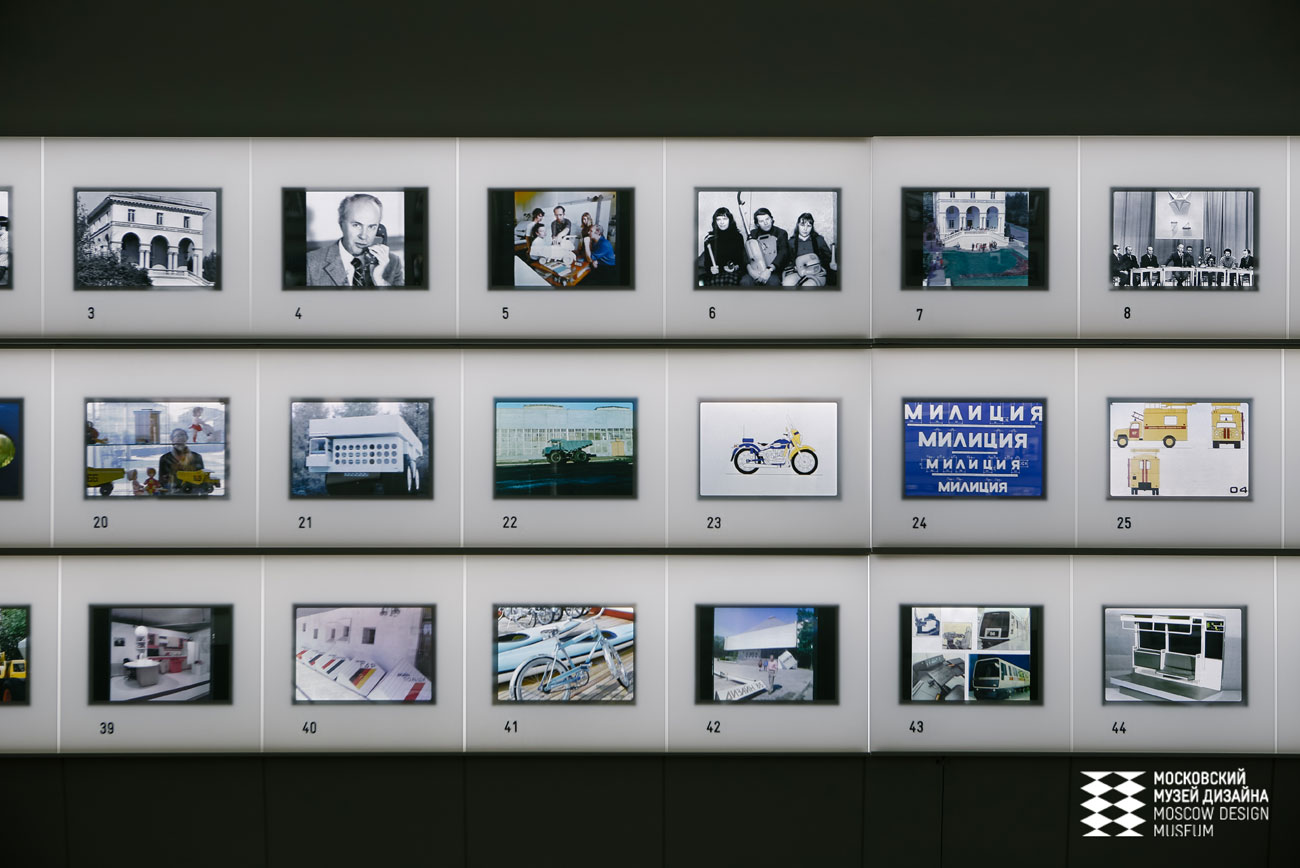 Slides in the light boxes. Source: Sasha Nikonovich / Moscow Design Museum
Slides in the light boxes. Source: Sasha Nikonovich / Moscow Design Museum
On Sept. 17 the biennale will host a large program called Russian Design Day, with lectures by prominent designers on Soviet projects from 1960-80 (the word “design” was forbidden till 1989). The day will end with a documentary screening on the history of Russian design.
Renaissance of industry design
Alexandra Sankova thinks that with some modifications and additions, all of the abandoned projects on show by Soviet designers could be put to use.
The Moscow Design Museum was not alone in its willingness to revive the memory of Soviet utopian design: Russian state corporation Rostec and the Ministry of Industry and Trade acted as exhibition partners.
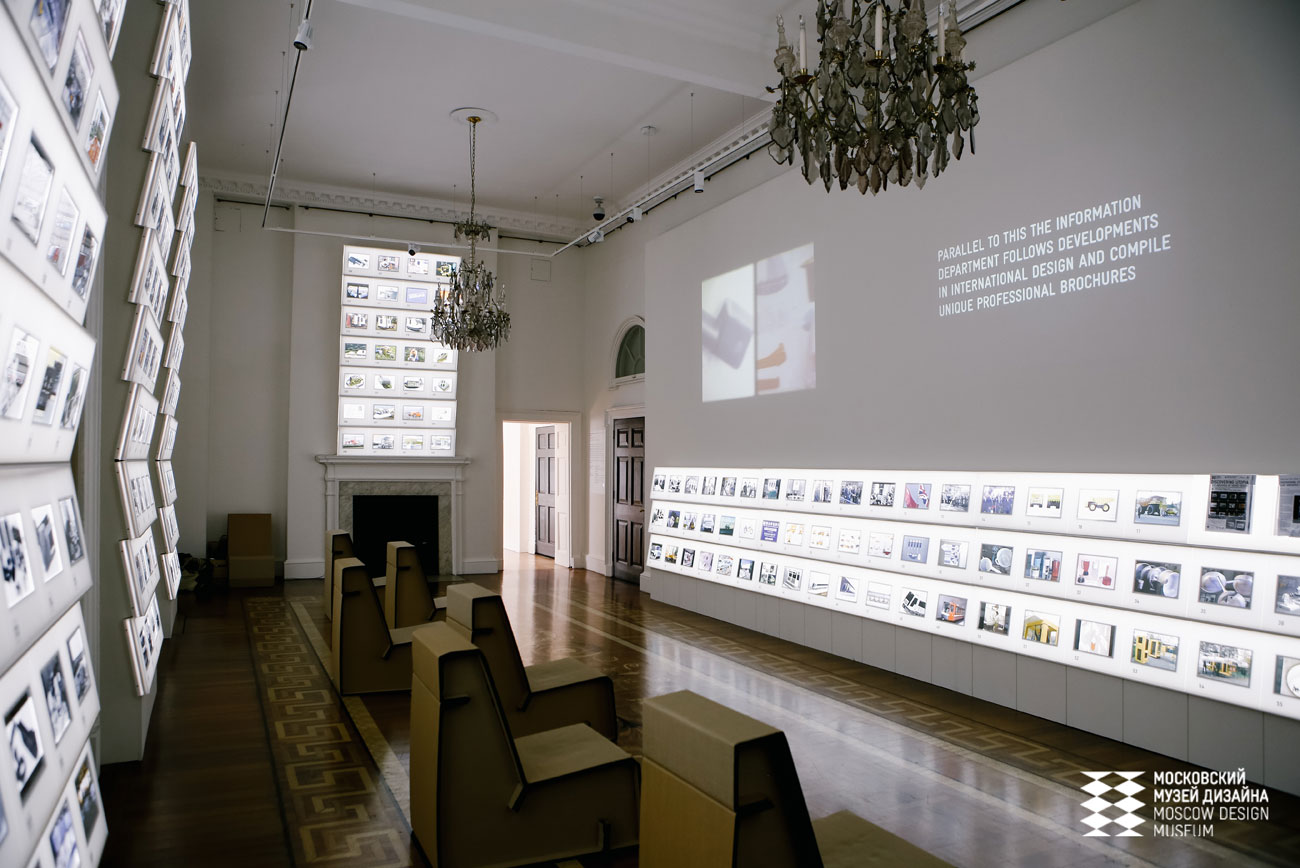 The Russian pavilion at the Somerset House. Source: Sasha Nikonovich / Moscow Design Museum
The Russian pavilion at the Somerset House. Source: Sasha Nikonovich / Moscow Design Museum
“After the collapse of the Soviet Union industrial design was no longer paid sufficient attention in our country, which has led to the lack of it as a phenomenon today,” said Rostec communications, analytics and strategic research director Vasily Brovko.
In 2015 Rostec took steps to revive industrial design in Russia by restoring the VNIITE institute of technical aesthetics and holding an open competition for industrial designers in Russia.
Gleb Nikitin, first deputy minister of industry and trade, also noted the importance of design in all kind of industries: “The designer should become the complete participant of the production process starting with project development and finishing with the final manufacturing of the product,” he said. He also congratulated Russian designers for getting a medal in such a prestigious event.
 Documentary on Soviet design shown on the wall at the exhibition. Source: Sasha Nikonovich / Moscow Design Museum
Documentary on Soviet design shown on the wall at the exhibition. Source: Sasha Nikonovich / Moscow Design Museum
‘Soviet chic’ still in style
London is currently awash with reinterpretations of the Soviet legacy in art. Until Oct. 15,the GRAD gallery is hosting the exhibition “Superwoman: Work, Build and Don’t Whine,” exploring the image of Soviet women in propaganda from the Russian Revolution of 1917 to perestroika.
Menawhile, the Calvert 22 Foundation is offering a whole season of exhibitions, educational events and film screenings devoted to the Soviet Union, called “Power and Architecture,” on show until Oct. 9. It is dedicated to utopian buildings in post-Soviet spaces that were originally intended to display the power of the Soviet authorities. This season in Calvert follows another, “Red Africa,” that explored Soviet-African relations.
Dr. Turner said he was not surprised that the Soviet aesthetic continues to be so appealing, saying that people like “the strong colors and the strong physical gestures” of what he called “a certain Soviet chic.”
“But I think the Moscow Design Museum’s exhibit transcends that,” he continued. “And what’s interesting about it is that it’s designers – contemporary Russian designers – looking back at their history and trying to learn from it.”
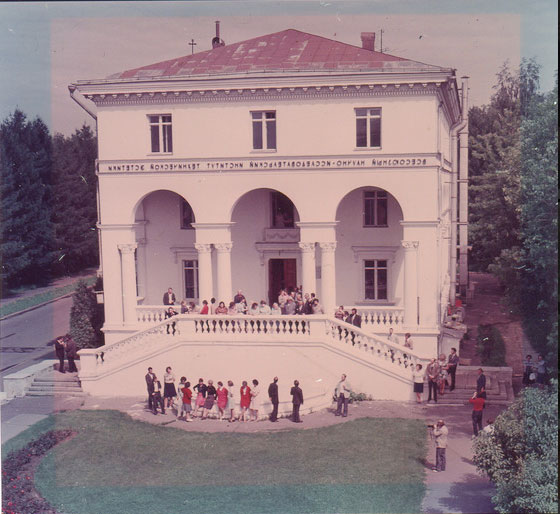 VNIITE building at VDNKh. Source: Archives of Moscow Design Museum
VNIITE building at VDNKh. Source: Archives of Moscow Design Museum
He added that he considers it very important that contemporary Russian designers look back at their history, and also expressed a regret that the Moscow Design Museum does not have its own building.
“People should learn from their past, they should archive their past and they should have research institutes of design history,” he said, adding that it would be “a true acknowledgement of the importance of all those things if Russia could find a home for a design museum like this one.”
Russia Beyond The Headlines is official media partner of the Moscow Design Museum exhibition.
Read more: 7 must-see exhibitions in Moscow and St. Petersburg this fall
All rights reserved by Rossiyskaya Gazeta.
Subscribe
to our newsletter!
Get the week's best stories straight to your inbox